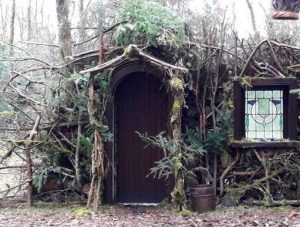
The renowned Ladakhi climate activist and environmental innovator, Sonam Wangchuk, who helped to develop and popularize a novel solution to regional water shortages in the form of artificial glaciers known as “ice stupas,”1 today entered 20th day of a three-week protest fast—sustained by only water and salt—aimed at raising awareness about the environmental damage being wrought on the Himalayan region in India’s far north in the name of industrialization, and calling for greater regional autonomy.
Wangchuk is protesting in the city of Leh along with thousands of Ladakhis, who are demanding measures to protect Ladakh’s fragile ecosystems, it’s territorial integrity in the face of belligerent neighbors, and a separate statehood for Ladakh, which is currently classified by India’s government as a union territory.2
In 2019, the national government, led by the right-wing Bharatiya Janata Party (BJP), passed a controversial bill that revised the status of the far northern state of Jammu and Kashmir, dividing it into the two union territories: Ladakh, and Jammu and Kashmir. While the move garnered widespread criticism, it also appeared to grant Ladakh a fresh identity that set it apart geographically, administratively, and demographically from neighboring regions as India’s first Buddhist-majority union territory.2
At first, Buddhists in Ladakh celebrated the change, hoping that it would lead to greater autonomy. However, actions by India’s government soon sparked alarm. In 2020, Chering Dorge, former BJP president in Ladakh, told reporters that almost immediately, control over local affairs was stripped from the locally elected council. He also voiced concern that state “land may be transferred to industrialists or the army without the consent of the council.”3
Wangchuk, who has garnered international acclaim for his sustainable development initiatives for Ladakh’s high-altitude Himalayan environment, has been enduring sub-zero temperatures over the course of his three-week protest, which began on 6 March. He is probably best known for popularizing “ice stupas” as a means to conserve winter water for local communities to use during the region’s arid months of spring, in the process becoming something of a Buddhist symbol of the global struggle with climate change.

The high-altitude glaciers of the Himalayas, sometimes referred to as the Earth’s “third pole,” contain the largest concentration of frozen water outside of the planet’s two polar regions. These glaciers feed many of the region’s great rivers, including the Brahmaputra, the Ganges, and the Indus, helping to supply water to almost half of the world’s population, who use it for human consumption, agriculture, and hydro-energy. These essential glaciers have been disproportionately affected by warming global temperatures, which have impacted not only the glaciers themselves but, by extension, vital precipitation patterns across the vast Tibetan Plateau.
“We’re already facing climate disaster and these glaciers and mountains will be destroyed if there is not a check on unbridled industrial development and military maneuvers” in the region, Wangchuk said in an interview on Sunday. (VOA) Wangchuk has criticized the national government for, among other projects, approving a giant 13-gigawatt solar power project without local consultation.
“Ladakh has become like a colony,” Wangchuk lamented. “Some commissioners from a far off place, with no link with local people or ecology, are trying to run this place. Ladakh is in fact like Mars. Imagine someone, say from Lucknow, trying to make policies for the region. They wouldn’t understand and they will end up making big mistakes, cause irreparable damage to our valleys, mountains.” (Hindustan Times)
Sandwiched between India, Pakistan, and China, Ladakh is also facing territorial uncertainties amid political deadlocks and a military standoff with China since 2020,4 in addition to the erratic disruptions caused by climate change.
Wangchuk observed that Ladakh’s nomads were also losing access to prime pastureland amid India’s huge industrial development plans as well as territorial encroachments by China’s military. The news website VOA reported that shepherds in the region have complained about Chinese troops seizing multiple pasturelands and restricting them from grazing their herds.

Wangchuk emphasized that these compounding factors equalled “not just a local disaster in [the] making but an international one as these mountains are part of [the] Greater Himalayas, intricately linked to over two billion people and multiple countries.” (VOA)
Ladakh’s status as a refuge for endangered wildlife is also under threat. India’s Trans-himalayan biogeographical zone is populated by numerous rare and endangered species, among them wild yaks, snow leopards, and black-necked cranes. These and other fragile wildlife populations form an interconnected ecosystem that has been instrumental in been sustaining indigenous communities for centuries.
Wangchuk has cautioned that his 21-day fast, which is scheduled to conclude tomorrow, will be continued by a relay fast: “Women will fast for 10 days, then the youth, then bhikshus, [then] nomads,” he said. “Saving Ladakh is important for the country. On one side there is Pakistan, and China on another. People’s confidence is important as it’s a sensitive region.” (Hindustan Times)
The activist has pledged that a protest march to the border with China will be held after the conclusion of his 21-day fast in order to bear witness to territorial encroachments.
“If we go to the Changthang Plains on the border of Tibet or China, you will see how much land the nomadic tribes that are famous for producing pashmina fiber are losing,” Wangchuk noted. “On one hand, they are losing land to Indian corporates, who are going there to set up their plants, industry, maybe mining in future. There is already a huge 13-gigawatt solar plant and they are losing roughly 150,000 square kilometers of prime pastureland to it. . . . On the other hand, they are losing land to the Chinese army, which is encroaching from the north.” (The Wire)
Predicting that domestic security forces could move to head off the march, Wangchuk added that it would represent proof that “there are a lot of things to be covered up.” (The Wire)
20th Day OF MY #CLIMATEFAST
— Sonam Wangchuk (@Wangchuk66) March 25, 2024
3000 people fasting with me. But still not a word from the government.
Very unusual for a democracy… when 90% of the population have come out to remind the leaders of their promises and 100s have been on fast some for 20 days.
But we're very… pic.twitter.com/UeNQDZGNtZ
Earlier today, Wangchuk shared a video on social media in which he expressed his unwavering commitment to, and faith in, his cause.
“Hello and greetings from the high Himalayas,” Wangchuk said, his voice weakened by three weeks of fasting. “This is my 20th day of hunger fast on water and salt, and today some 3,000 people are fasting with me at this Martyr’s Memorial Park.
“Today, unfortunately, I’m not feeling energetic. [I] feel very tired, and my whole body is aching. It’s perhaps partly to do with overexertion yesterday, as I was feeling good for the last two days, and I made some speeches, etc., yesterday. And partly to do with 20 days of hunger; it’s natural to feel weak. So I won’t be able to speak much. But I just want to say that I have not lost faith in this nation, this great nation, and its leaders also, [and] especially its people, ordinary citizens. As for leaders—and the mainstream media, which is like a pillar of democracy—I’m sure their consciences will not let them sleep at night; will make them realize what they are doing to Ladakh so blatantly.
“I’ll just thank you all the citizens, the ordinary, powerless citizens, who have become such a support for Ladakh, who have become the media and taken our words far and wide to every citizen in the country. I’m sure it will reach our prime minister, and the home minister, and the honorable president also. And I’m sure I still have faith [that] they’ll soon realize and do justice and stand respectable themselves.
“That’s all I can say today, thank you very much and Jai Hind.”
1 Ice Chorten in Ladakh Becomes a Buddhist Symbol of the Climate Change Crisis (BDG)
2 Ladakh Becomes India’s First Buddhist-majority Union Territory Following Kashmir Bifurcation (BDG)
4 Work, Walk, and Pray for Peace: Bhikkhu Sanghasena Undertakes Peace Pilgrimage in Ladakh (BDG)
See more
Sonam Wangchuk’s hunger strike for Ladakh’s autonomy, ecology enters day 19 (Free Press Kashmir)
Protests in Ladakh Enter Third Week as Locals Seek Protection of Fragile Ecology (VOA)
Wangchuk-led groups in Ladakh demand Constitutional protection under 6th schedule (Hindustan Times)
Ladakh: Sonam Wangchuk Promises March to Border to Highlight Land Takeover by China, Industries (The Wire)
Sonam Wangchuk (X)
Related news reports from BDG
Buddhists Unite with Interfaith Leaders to Demand Statehood and Ecological Protections in Northern India
Work, Walk, and Pray for Peace: Bhikkhu Sanghasena Undertakes Peace Pilgrimage in Ladakh
Green Himalayas: Ladakh Launches Ambitious Climate Change Project
Ladakh Becomes India’s First Buddhist-majority Union Territory Following Kashmir Bifurcation
Ice Chorten in Ladakh Becomes a Buddhist Symbol of the Climate Change Crisis












